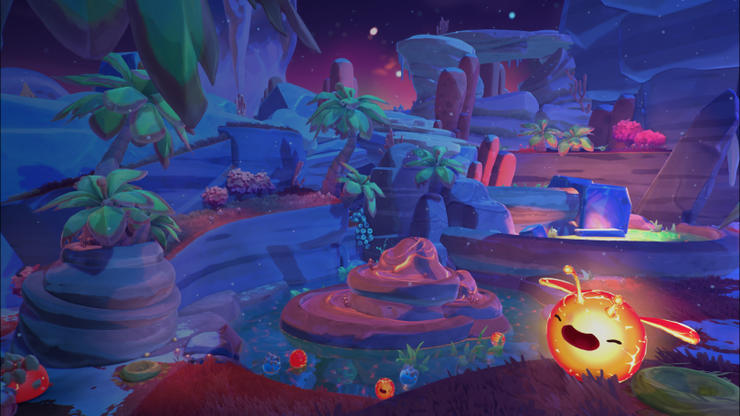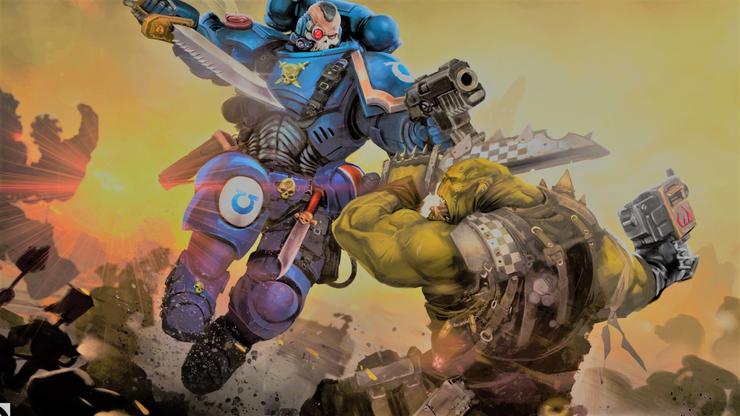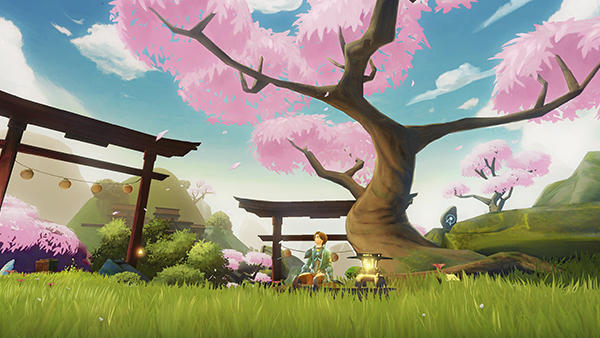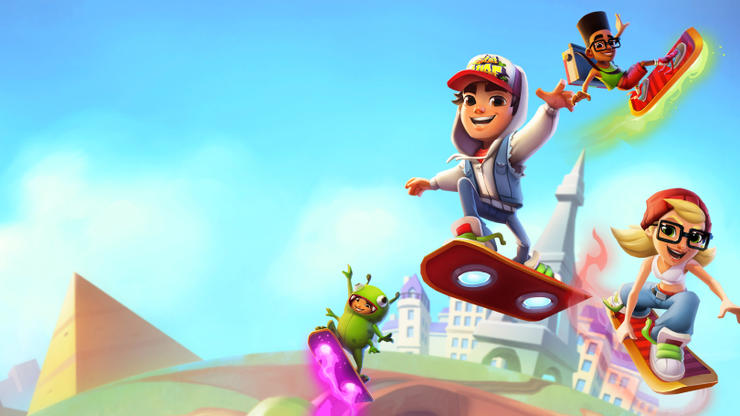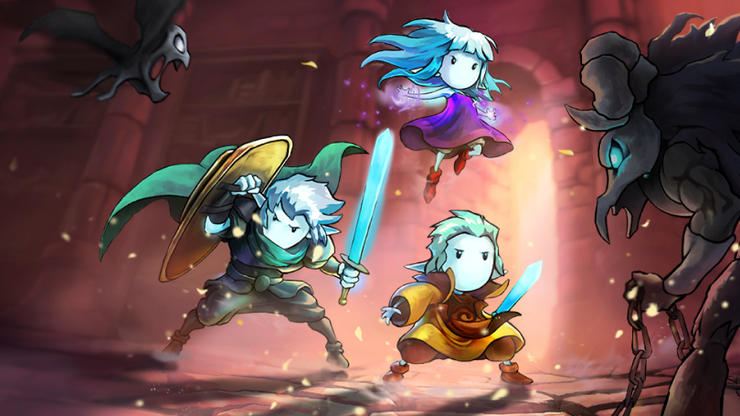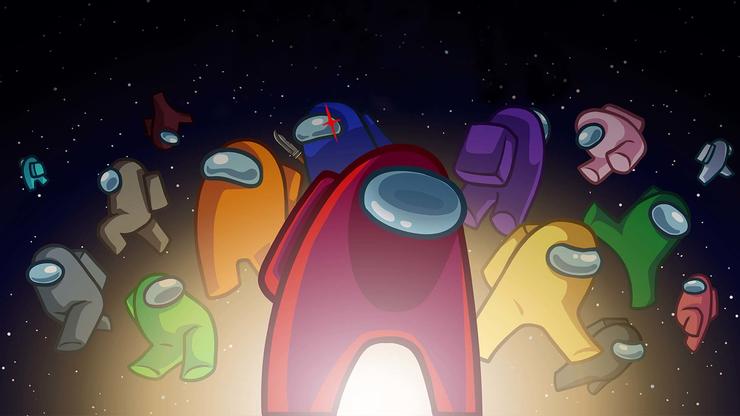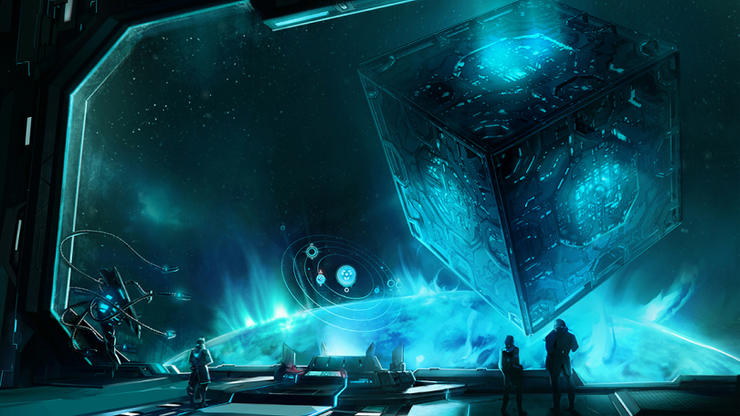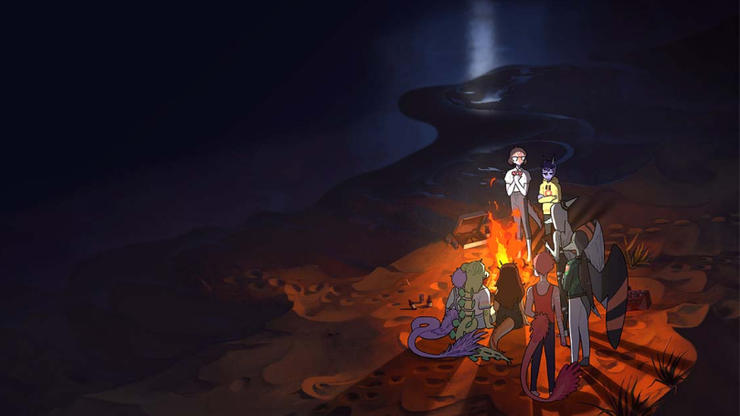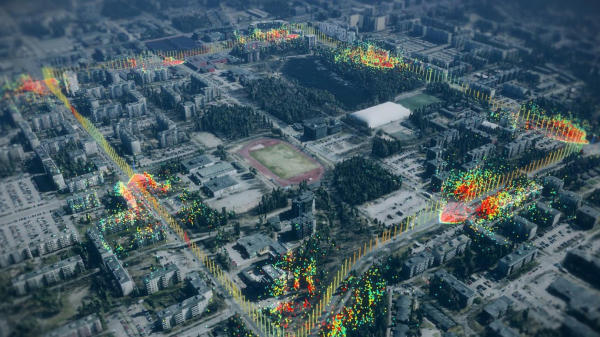Neue Fallstudien
Slime Rancher 2
Erfahre, wie Monomi Park Unitys HDRP, Source Code Access und NVIDIA PhysX nutzte, um mit Slime Rancher 2 eine größere und leistungsfähigere Welt aufzubauen.
von Everguild
Erfahren Sie, wie Everguild Universal Render Pipeline, Unity Asset Store, Profiler und Addressables nutzte, um eine plattformübergreifende Version zu erobern.
Zenith Die letzte Stadt
Durch die flexible Entwicklungsplattform von Unity, Multithreadprogrammierung, robuste DevOps-Tools und eine aktive Community, hat Ramen VR das weltweit erste plattformübergreifende VR MMO auf den Markt gebracht.
Rollerdrome
Erfahren Sie, wie Roll7 ihren dynamischen Action Shooter schnell vom PC auf Konsolen erweitert und dafür gesorgt haben, dass er auch auf Next-Generation-Konsolen bei 4K mit 120 Hz weiterhin gut aussieht.
Subway Surfers
Entdecken Sie, wie die 10-jährige Partnerschaft zwischen SYBO und Unity Subway Surfers geholfen hat, zu einem der am häufigsten heruntergeladenen Spiele der Geschichte zu werden.
Pause: Greak: Memories of Azur
Erfahren Sie, wie Navegante es geschafft hat, ihre erste Version von Greak: Memories of Azur fristgerecht auf mehreren Plattformen zu veröffentlichen. Greak: Memories of Azur
Empfohlene Fallstudien
Among Us
Erfahren Sie, wie InnerSloth in Zusammenarbeit mit Unity für eine stabile Erfahrung bei Among Us sorgt, während es die Daten erhielt, die nötig waren, um den Spielern neue Funktionen zur Verfügung zu stellen.
Crying Suns
Die Erschaffung einer immersiven Sci-Fi-Welt mit Aussehen und Gefühl im Pixelgrafik-Look ist eine echte Meisterleistung. Erfahren Sie, wie Alt Shift Crying Suns auf Mobilgeräte portiert und dadurch das Zehnfache der Ausgaben verdient hat.
Goodbye Volcano High
Als grafikergeführtes Studio benötigt KO_OP eine Versionskontrolle, die für das gesamte Team funktioniert. Erfahren Sie, wie Unity Plastic SCM Grafikern und Technikern geholfen hat, ihren Produktionsprozess aufeinander abzustimmen.
Sitowise
Erfahren Sie, wie Sitowise durch seine Nutzung digitaler Zwillinge zukunftsweisend in nachhaltiger Konstruktion und Sicherheit arbeitet.
Volvo Cars
Erfahren Sie, wie Volvo die Automobilbranche durch interaktive virtuelle Erfahrungen mit Unity vorantreibt.
Beginnen Sie noch heute Ihre Reise in das Metaversum
Nehmen Sie an unserer Webinar- und Workshop-Reihe Road to the Metaverse teil, bei der wir Ihrem Unternehmen Werkzeuge für den digitalen Wandel an die Hand geben.
Spiele – Konsolen, PC, Mac
- Antigraviator
- Apex Legends
- Bleak Sword DX
- Card Shark
- Children of Morta
- Städte: Skylines
- Crowfall
- Death Carnival
- Desperados III
- Empire of Sin
- The Falconeer
- Flipping Death
- Forgotton Anne
- forma.8
- Gang Beasts
- GNOG
- Goodbye Volcano High
- Pause: Greak: Memories of Azur
- Hand of Fate
- Harter Raum: Schiffbrücher
- Hearthstone
- I Am Fish
- IMMORTALITY
- Kerbal Space Program
- Last Stop
- Maximum Football
- Minute of Islands
- Ori and the Will of the Wisps
- Phased
- Quantum League (E-Mail erforderlich)
- Überbleibsel: Aus der Asche (E-Mail angefordert)
- République
- Riot-Animation
- Robbie Swifthand
- Rogue Company
- Rollerdrome
- Sable
- Slime Rancher (E-Mail erforderlich)
- Team17
- Two Point Campus
- Valorant
- V Rising
Spiele – Mobilgeräte
- Among Us
- Age of Magic
- Arena of Valor
- Anonymisierter Monetarisierungsbericht
- Axes.io
- Beat the Boss (Chinesisch, Japanisch, Koreanisch, Russisch)
- Candivora
- Chaos Lords
- Crazy Defense Heroes
- Crying Suns
- Demolition Derby
- Dice Hunter
- East Side Games
- von Everguild
- Farm Away
- Fruit Bump
- GameJam
- Gameloft
- Guns of Boom
- Hitman GO
- Hundred Soul
- Jeopardy! World Tour
- Jurassic Monster World
- Last Day on Earth
- Little Orpheus
- Ludo King
- MARVEL SNAP
- Megacity
- Mindstorm
- Monument Valley
- My Spa Resort
- OneBit Adventure
- Outfit7
- Pirate Kings
- Please, Touch the Artwork
- Rodeo Stampede
- Rogue Racers
- RollerCoaster Tycoon Touch
- Rolling Sky
- Royal Blood
- Shadowgun War Games
- Space Ape
- Subway Surfers
- SundayToz
- Tacticool
- Die Walking Dead: No Man's Land (Japanisch, Koreanisch, Russisch)
- Die sieben Todsünden: Großes Kreuz
- Tic Toc Games
- Tinytouchtales
- Tiny Bubbles
- Trailmix
- Trivia Crack 2
- Warlords of Aternum
- War Robots
- Wooga
- Gameplay „Where Cards Fall”
Spiele – Augmented Reality
- Dr. Seuss’s ABC –An Amazing AR Alphabet gesammelt hat.
- Jurassic World Alive
- My Dino Mission
- PHAROS
- Wallace & Gromit AR The Big Fix Up
Spiele – Virtual Reality
Architektur-, Ingenieur- und Bauwesen
- Aurecon (Unsigned Studio) (Video)
- DPR Construction
- Holland Basham Architects
- Losci
- Marxent
- Mortenson
- Mortenson – Hospital Project
- Mortenson – Climate Pledge Arena
- Norconsult
- P+HS Architects (Video)
- SHoP Architects (Video)
- SimRTR
- Sitowise
- Skanska
- Sounds Hanaam
- Trondheim
- Urban Splash
- Valero Dewalt Train
- Vancouver International Airport (YVR)
- Vectuel
- Zutari
Automobilbranche, Transportwesen, Fertigung
- ABB
- Arksen
- Autoliv
- BMW
- BMW Realität vs. Illusion – Raytracing (Video)
- Brose Group
- Cross Compass
- Daimler Buses
- Daimler Protics
- HIER AN.
- holoride
- HOMAG
- Honda
- INFINITI
- Lexus
- Manufacturing Technology Centre
- Neural Pocket
- Toyota
- Taqtile
- VirtaMed
- Volvo Cars
- Volvo Cars (Video)
- Volkswagen Innovation Center California (ICC)
- Volkswagen
